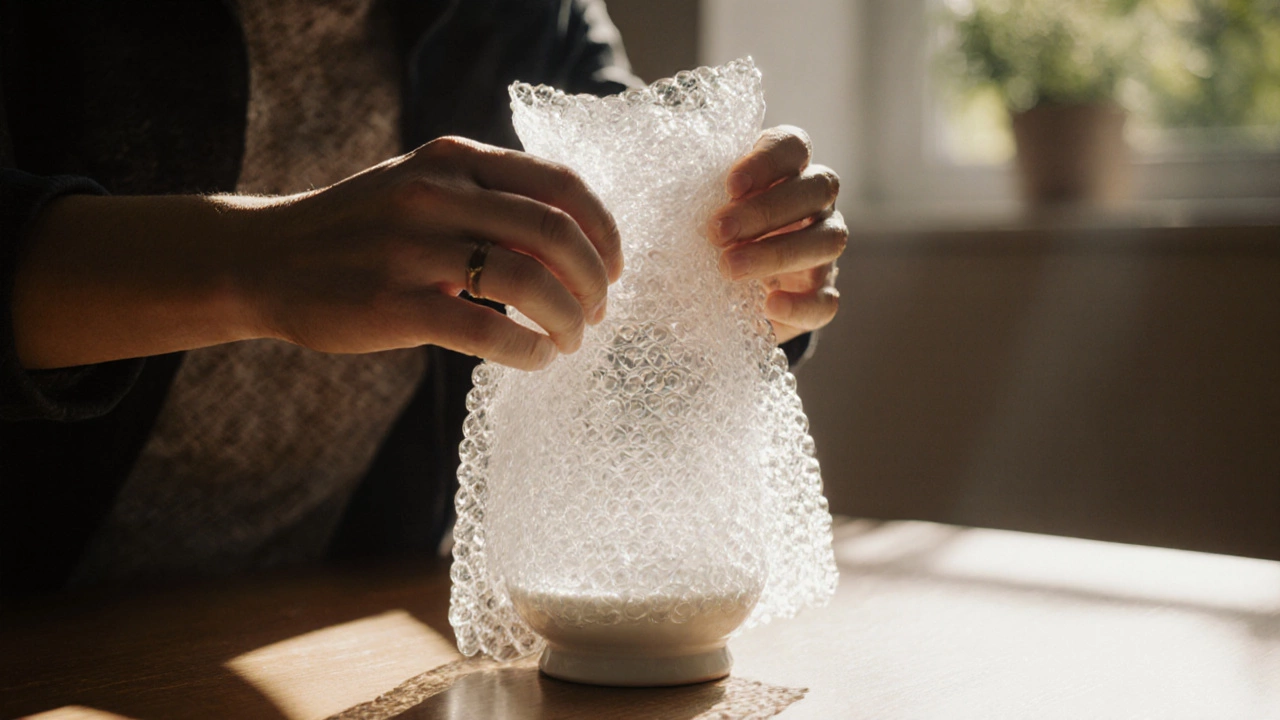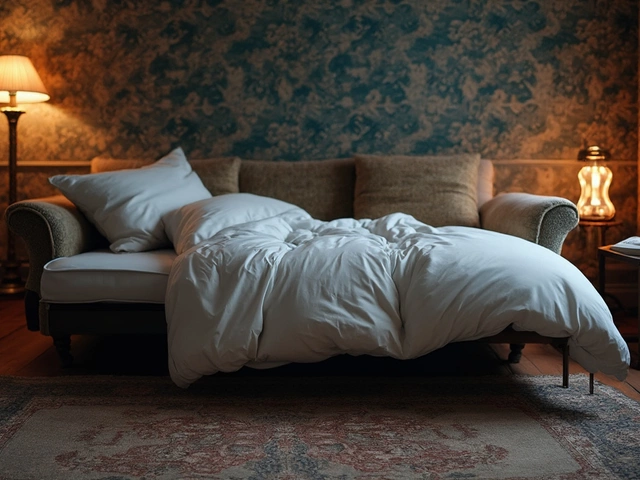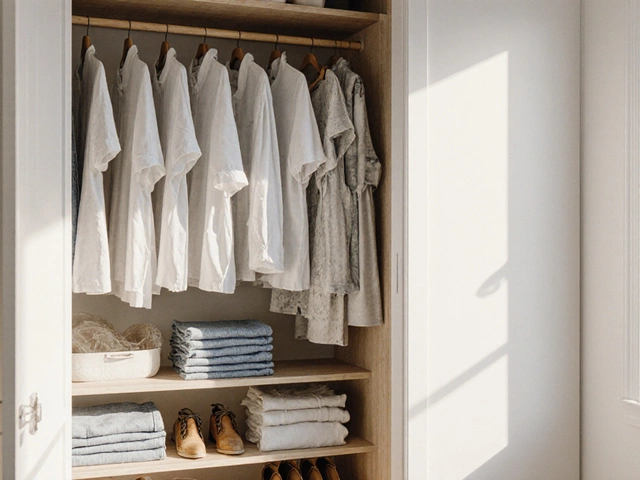Bubble Wrap Long-Term Storage Safety Advisor
Storage Risk Assessment
Enter your storage details to calculate risk level and get personalized recommendations.
Ever tucked a priceless heirloom into a bubble‑wrapped box and wondered if that makes it safe for a decade or more? The answer isn’t as simple as ‘yes’ or ‘no.’ It depends on the material, the environment, and how you layer the protection. Below we break down everything you need to know to keep your items safe when you store them for the long haul.
What Exactly Is Bubble Wrap?
Bubble wrap is a lightweight protective packaging made from low‑density polyethylene (LDPE) that contains a network of air‑filled bubbles. It was invented in 1957 and quickly became the go‑to material for cushioning fragile goods. The tiny bubbles act like tiny shock absorbers, distributing impact forces across a large area.
How Bubble Wrap Is Made - The Role of Polyethylene
At the heart of bubble wrap is Polyethylene is a versatile polymer derived from petroleum that can be molded into thin films with high flexibility. The film is extruded, sealed, and then inflated with air or a nitrogen‑rich gas mixture to form the bubbles. Because the film is thin, it lets air in and out, which is great for short trips but can be a problem when you need a sealed barrier for years.
Pros of Using Bubble Wrap for Short‑Term vs. Long‑Term Storage
When you’re moving a sofa for a week, bubble wrap works wonders. The advantages include:
- Excellent cushioning against drops and bumps.
- Lightweight - adds minimal weight to heavy furniture.
- Inexpensive and widely available.
For long‑term storage (six months or more), the picture shifts. While the cushioning stays effective, other factors become critical:
- Moisture transfer: The LDPE film is semi‑permeable. Over time, humidity can seep in and cause mold or warping on wood.
- Off‑gassing: Polyethylene can release volatile organic compounds (VOCs) slowly, especially in warm conditions. These chemicals can affect delicate items like photographs or antique fabrics.
- Compression set: The bubbles may lose their shape after being crushed for long periods, reducing protective ability.
Key Risks to Watch Out For
Understanding the downsides helps you mitigate them. Common risks include:
- Moisture buildup: If stored in a damp basement, the bubbles can trap water against the item, leading to rust on metal or rot on wood.
- Static electricity: Polyethylene can generate static, which is dangerous for electronics or archival media.
- Fire hazard: While the film is not highly flammable, it can melt and release toxic fumes if exposed to high heat.
- UV degradation: Direct sunlight can break down the polymer, making it brittle.
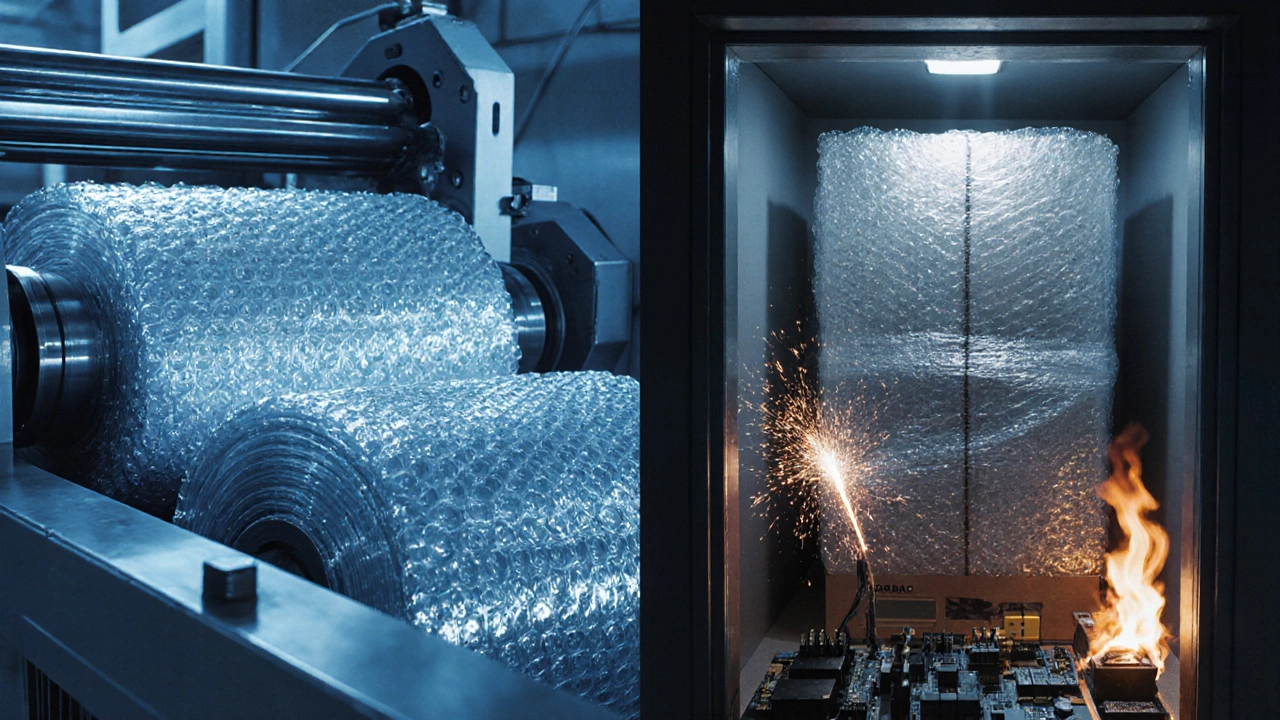
Best Practices for Using Bubble Wrap in Long‑Term Storage
Follow these steps to turn bubble wrap from a short‑term solution into a viable long‑term guard.
- Choose the right bubble size - 3/16" bubbles for delicate items, 1/2" bubbles for bulkier pieces.
- Wrap items in multiple layers. Two layers give a moisture barrier; three layers add extra cushioning.
- Seal the wrapped item inside an Archive box is a sturdy, acid‑free cardboard container designed for long‑term preservation. This creates a secondary barrier against dust.
- Place a desiccant pack, such as Silica gel is a granular form of silicon dioxide that absorbs moisture from the surrounding air., on top of the wrapped item inside the box.
- Store the box in a Climate‑controlled storage is a facility that maintains temperature and humidity within narrow limits, typically 55-65°F and 40-55% relative humidity. This minimizes humidity swings.
- Label the box with contents and date. If you need to retrieve the item after years, you’ll know exactly where it is.
Alternative Cushioning Materials - How Do They Compare?
Bubble wrap isn’t the only option. Below is a quick comparison of three common packing materials when it comes to long‑term storage.
| Material | Moisture Barrier | Compression Retention | Off‑gassing | Cost per sq ft |
|---|---|---|---|---|
| Bubble wrap (LDPE) | Low - semi‑permeable | Medium - loses shape if crushed | Low, but can increase with heat | $0.12 |
| Foam peanuts (EPS) | Medium - closed‑cell | High - retains shape | Very low | $0.08 |
| Corrugated cardboard | Medium - can be wax‑coated | Low - compresses over time | None | $0.05 |
If your budget allows, pairing bubble wrap with a layer of foam peanuts or a double‑wall corrugated sheet can give you the best of both worlds: lightweight cushioning plus improved moisture protection.
Checklist - Is Your Bubble‑Wrapped Storage Ready for Years?
- Are the bubbles intact and not flattened?
- Did you use a double‑layer wrap for added moisture resistance?
- Is the item placed inside an acid‑free archive box?
- Did you add silica gel or another desiccant?
- Is the storage location climate‑controlled?
- Have you avoided direct sunlight and sources of heat?
- Did you label the box with contents and storage date?
Crossing all these boxes off gives you confidence that the bubble wrap will continue to protect, not harm, your belongings.
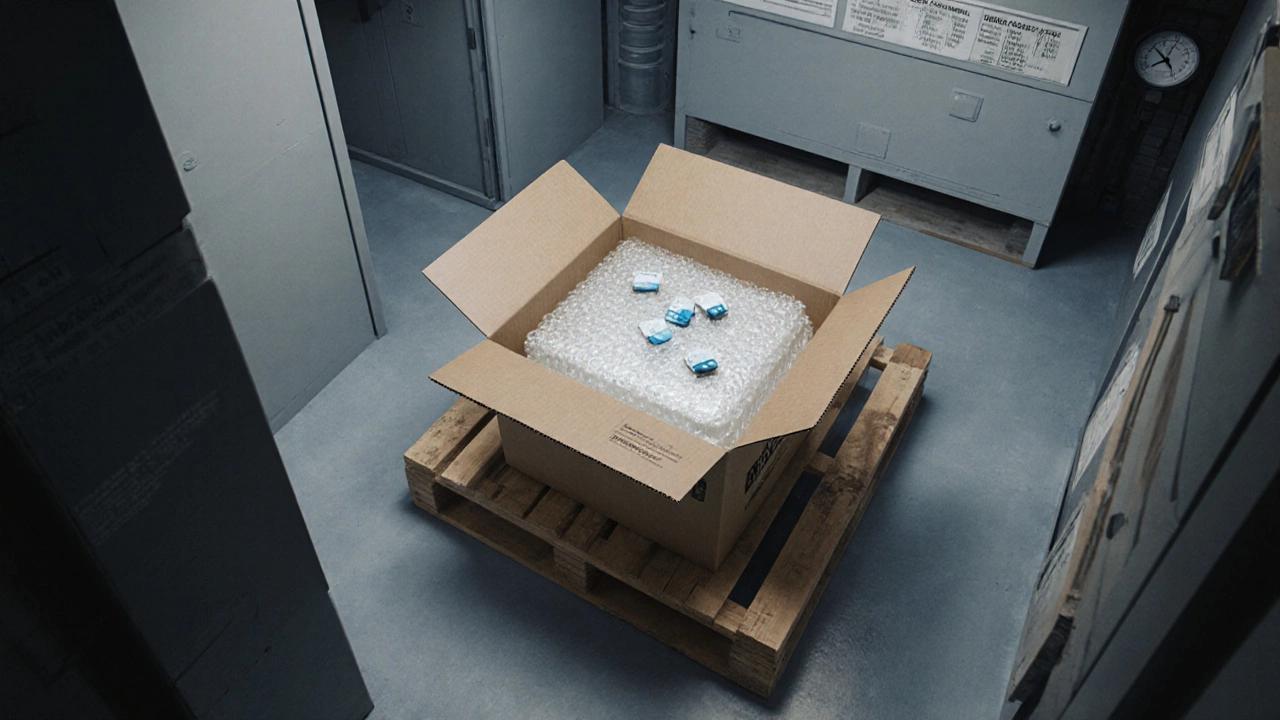
Common Mistakes and How to Fix Them
Even seasoned movers slip up. Here’s what to watch for:
- Using thin, single‑layer bubble wrap for heavy furniture. Solution: Upgrade to 1/2" bubble size and add a second layer.
- Storing wrapped items directly on concrete floors. Solution: Place a pallet or a sheet of plywood underneath the boxes to prevent moisture wicking.
- Skipping desiccants. Solution: Include at least one 5 g silica gel pack per cubic foot of box volume.
- Leaving boxes in a garage that sees temperature swings. Solution: Move them to a climate‑controlled unit or a well‑ventilated attic with stable temperatures.
When to Choose a Different Packing Material
If any of the following apply, consider alternatives:
- Items are highly sensitive to static (e.g., vinyl records, computer chips).
- You need a completely airtight barrier - think archival‑grade Foam peanuts are closed‑cell and provide better protection against moisture.
- Budget constraints demand the cheapest option - double‑wall Corrugated cardboard can be reinforced with wax coating for modest moisture protection.
Final Thoughts
Bubble wrap can be safe for long‑term storage, but only when you respect its limits. The key is to treat it as part of a broader system: choose the right bubble size, double‑wrap, seal inside an archive box, add silica gel, and keep the whole package in a climate‑controlled space. Ignoring any of those steps can turn a protective blanket into a slow‑acting trap for moisture, static, or off‑gassed chemicals.
Can bubble wrap cause mold on stored items?
If the wrapped item is stored in a humid environment, the semi‑permeable film can let moisture in, leading to mold on organic materials like wood or fabric. Use a dehumidifier or silica gel packs and store in a climate‑controlled unit to prevent this.
Is bubble wrap flammable?
Polyethylene will melt before it ignites, but it can release toxic fumes when exposed to high heat. Keep wrapped items away from heating elements and fire sources.
How many layers of bubble wrap are ideal for a 5‑year storage plan?
Two layers of 1/2" bubbles work well for most household items. Add a third layer for very fragile pieces like glassware. Always combine with an archival box and desiccant.
What’s the difference between polyethylene bubble wrap and anti‑static bubble wrap?
Anti‑static bubble wrap has a conductive coating that dissipates static charge, making it safe for electronics. Regular LDPE bubble wrap can build up static, which may damage sensitive components.
Can I reuse bubble wrap after a move?
Yes, as long as the bubbles are still intact and the film is clean. Wash it with mild soap, let it dry, and store flat to keep its protective qualities.
